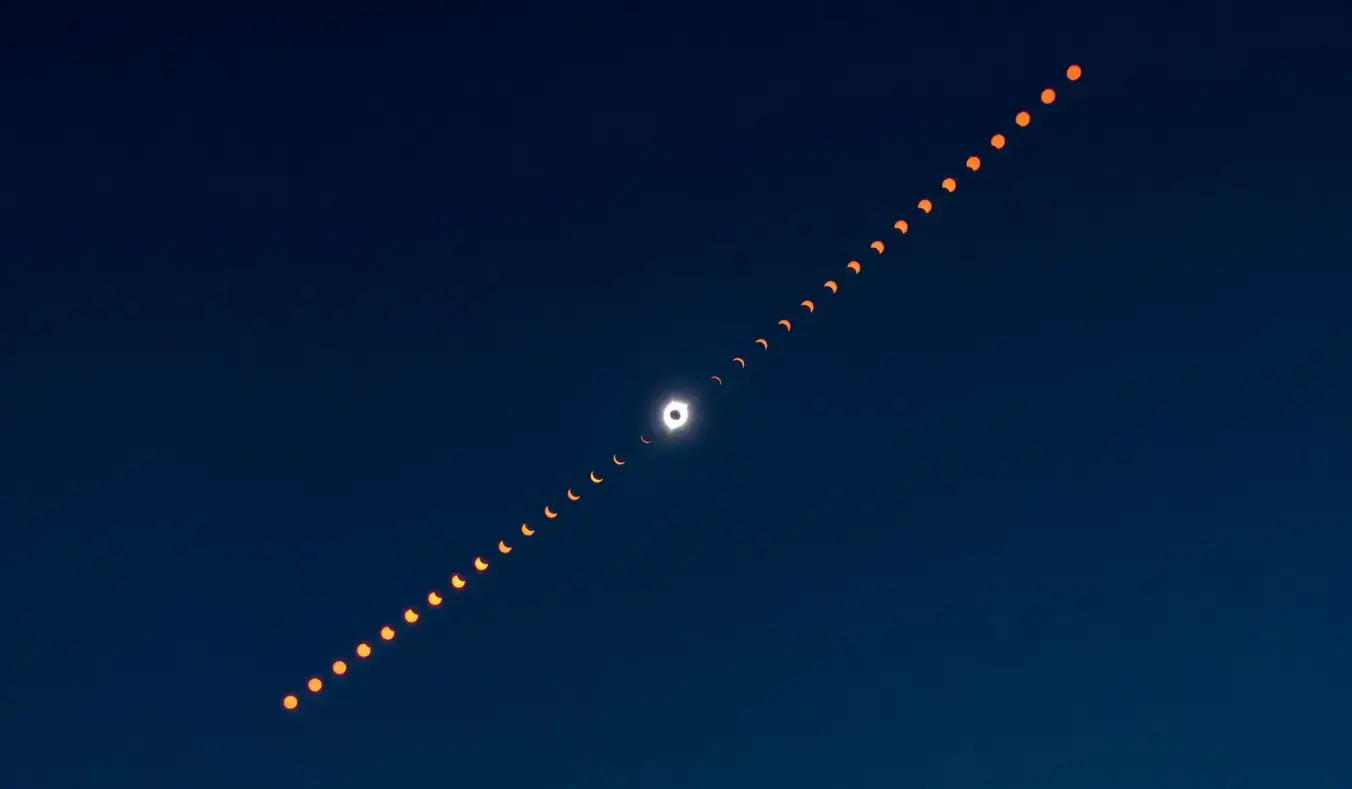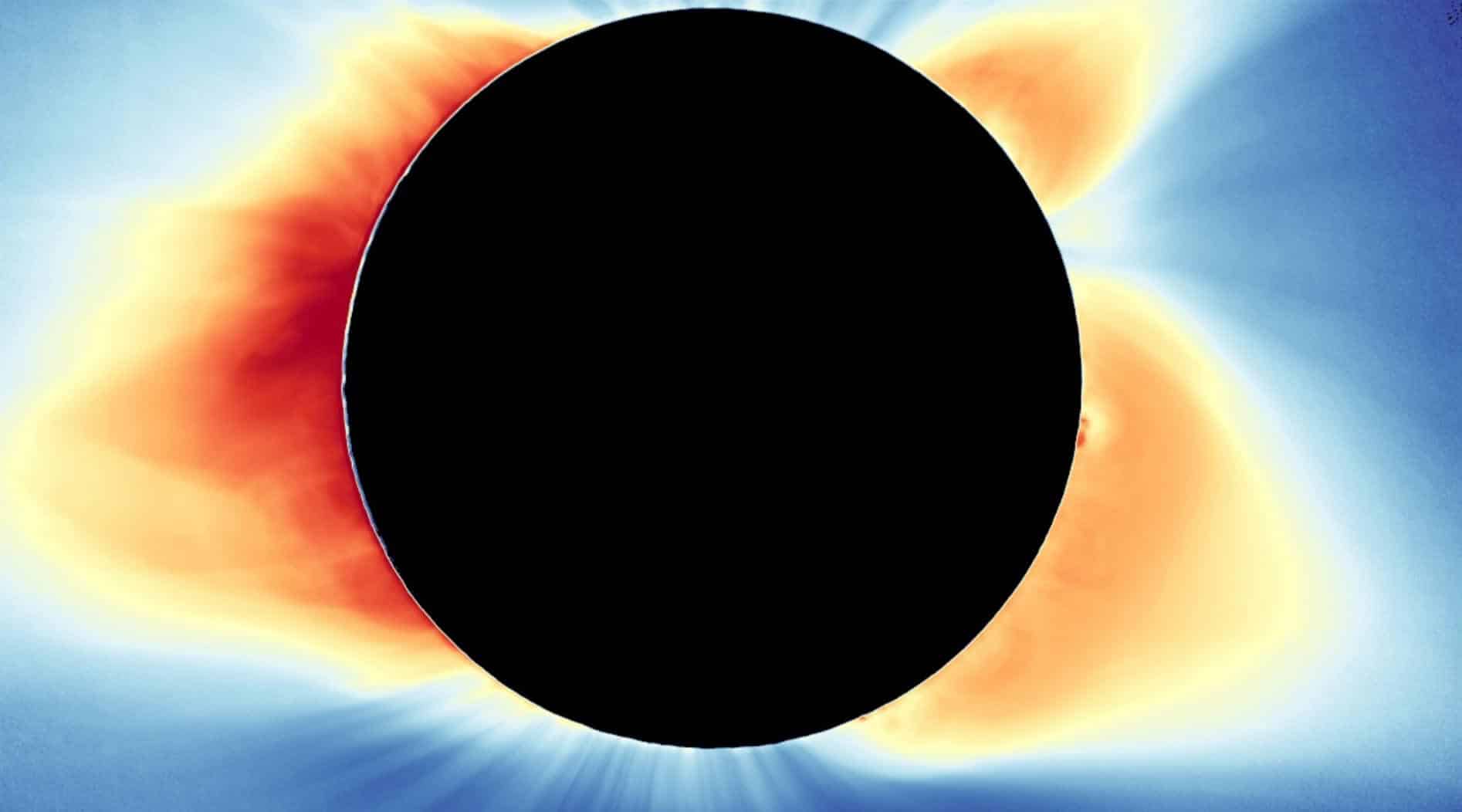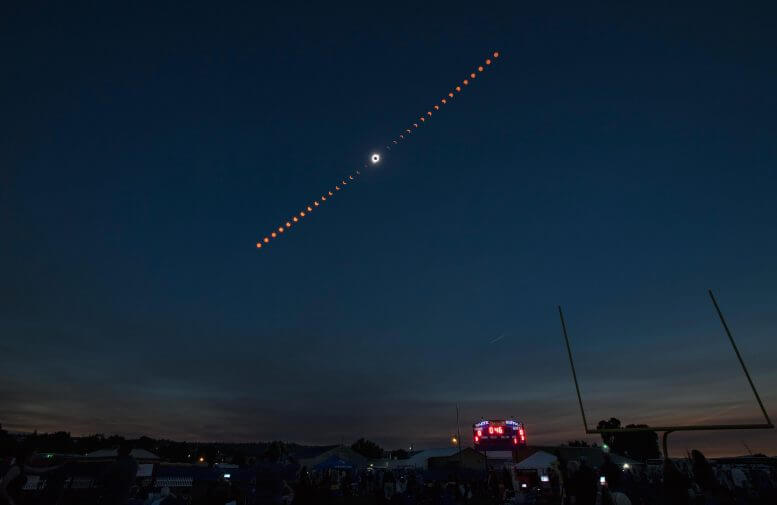Using the high-altitude research plane WB-57, in one of the projects they will photograph the eclipse from a height of 15 km from the ground. The team hopes that taking the photos above most of the country's atmosphere will make it possible to see new details of structures in the middle and lower corona

A total solar eclipse will darken a swath of North America when the moon blocks sunlight for a few minutes on April 8, 2024. In addition to casting a breathtaking fleeting shadow over the heads of millions of people, this total eclipse is a unique opportunity for scientists to study the Sun, Moon and their interactions.

In total solar eclipses, the moon perfectly blocks the surface of the sun, allowing the weak outer atmosphere of the sun - the corona - to be clearly seen.

Chasing the eclipse using NASA's high-altitude research planes
Using the high-altitude research plane WB-57, in one of the projects they will photograph the eclipse from a height of 15 km from the ground. The team hopes that taking the images above most of the Earth's atmosphere will allow to see new details of structures in the middle and lower corona. The observations, which will be taken with a camera that takes pictures in ESA and in visible light with high resolution and speed, will also be able to help in the study of a ring of dust around the sun and in the search for asteroids that may orbit the sun closely. The project, led by Amir Caspi of the Southwest Research Institute in Boulder, builds on Caspi's successful 2017 project with a new camera set.

Photographs and spectroscopic observations from the air
The WB-57s will also fly cameras and spectrometers (which study the structure of light) to learn more about the temperature and chemical composition of the corona and its ejecta (large bursts of solar material). It is hoped that flying along the path of the eclipse will also extend the time available to them by more than two minutes. The team, led by Ida of the University of Hawaii at Haval, hopes that these observations will provide new insights into structures in the corona and the origins of the continuous stream of particles emitted from the sun, the solar wind.
"Listening parties" for radio fans
In the upper region of our atmosphere, energy from the sun pushes out electrons from atoms, so the region is charged ("ionized"). This region, the ionosphere, can help radio communications travel long distances, such as the communication between radio amateurs around the world. But when the moon blocks the sun in a solar eclipse, the ionosphere can change dramatically, affecting those communications.
In the total eclipse of 2024 and an annular eclipse this October, Nathaniel Frissell of the University of Scranton invites radio amateurs to participate in "solar eclipse QSO parties", where they will try to make as many radio contacts ("QSO" in their parlance) with other amateurs in different places. Enthusiasts will record the strength and distance of their signals to see how the ionosphere changes during the eclipse. Similar experiments in the past showed that changes in the electron content in the ionosphere greatly affected the way radio waves travel.
The effects of solar radiation on the upper layers of the earth's atmosphere
The darkest part of this eclipse's shadow passes over several locations equipped with SuperDARN radars. This network monitors the space weather conditions in the upper layers of the Earth's atmosphere, and the eclipse is a unique opportunity to study the effects of solar radiation on the upper layers of the Earth's atmosphere during the eclipse. The project led by Bharat Kondori will use three SuperDARN radars to study the ionosphere during the eclipse. The team will compare the measurements to predictions from computer models to answer questions about how the ionosphere will respond to the eclipse.
Sharpen the focus on magnetic "hot spots" of the Sun
In the upcoming eclipses, JPL scientist Thangasmi and Losmi, educators from the Lewis Center for Educational Research in Southern California and participants in the Solar Patrol citizen science program will observe the Sun's "active regions"—the magnetically complex regions that form above sunspots—as the Moon passes over them. The Moon's gradual passage across the Sun blocks different parts of the active zone at different times, allowing scientists to distinguish between light signals coming from one region versus another. The team will use the 34-meter-diameter GAVRT radio telescope to measure subtle changes in the radio emissions from active regions in the 2023 annular eclipse and the 2024 total eclipse. The technique, first used in the May 2012 annular eclipse, revealed details about the Sun that the telescope could not have discovered otherwise.
More on the subject on the science website
- One of the longest lunar eclipses of this century will be fully visible from Israel on Wednesday
- A total lunar eclipse occurred tonight
- Total solar eclipse - March 2006/Israeli Astronomical Society
- A particularly long solar eclipse - on June 21 in the afternoon in Africa
- The white will turn black - a solar eclipse tonight (our time) in Antarctica
